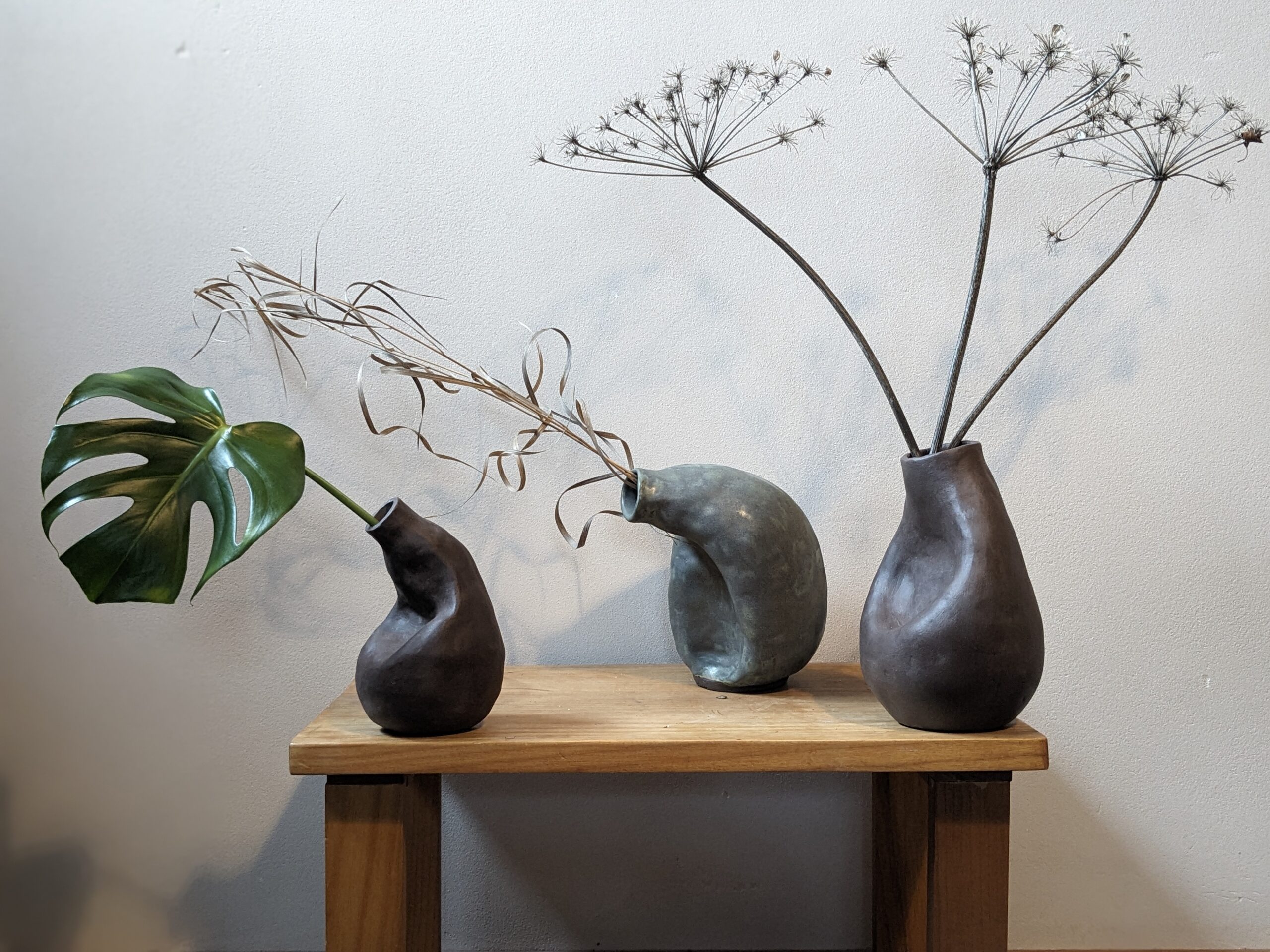We love featuring Flower Club Members on the blog. Not only does this give us the chance to get to know our members a little better, it’s also an opportunity to inspire other readers and members as they move along their flower journey.
Read more Flower Stories here.
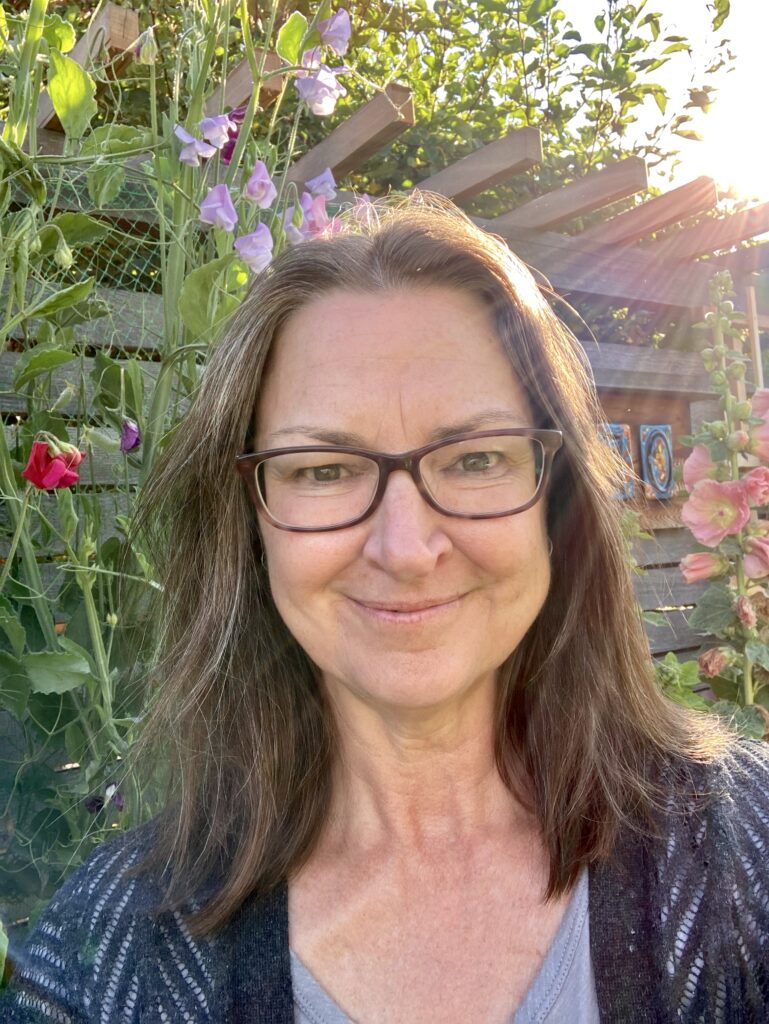
This week we’re chatting with Linda, Flower Club Member and artist. She shares her story as a flower lover in a small town in British Colombia, and gives her advice on finding yourself and your style within flower arranging.
Her quirky style is paired with organic ceramics created by her daughter, coming together to make stunning Ikebana arrangements.
Linda
How were you first introduced to the world of flowers?
Seven years ago I came across Erin Benzakein’s book (Floret Farms Cut Flower Garden) and it sparked something in me. I converted my front yard vegetable patch into a flower cutting garden and have been experimenting with growing and arranging flowers ever since.
I spent years experimenting with growing flowers and plunking them in vases with interesting tidbits from around the yard and nearby woods with no real guidance or rules of engagement.
Last year I came across the Hiroshi Teshigahara’s 1957 documentary “Ikebana” and was entranced. I signed up for Julia’s online “Ikebana bootcamp” and it launched me onto a new path where I feel I’m finding my groove.
What do you love about working with flowers?
Flowers take me outside my busy ‘monkey brain’ to connect with something bigger. They coax me to slow down, pay attention and get lost in their beauty and ephemerality. I think flowers speak to humans
and remind us of our place in the world. I love playing with them and surprising myself with what I create if I truly listen and follow their lead.
What is the best advice you have received through your floral arrangement journey?
I’ve read a number of floral artists say something along the lines of ‘let the flowers tell you where they want to go.’ For me following this advice turns flower arranging from a nerve racking, rational brain experience in frustration to an enjoyable meditative act that is more about surrendering to the process than it is about trying to achieve a certain preconceived design.
Let the flowers talk to you.
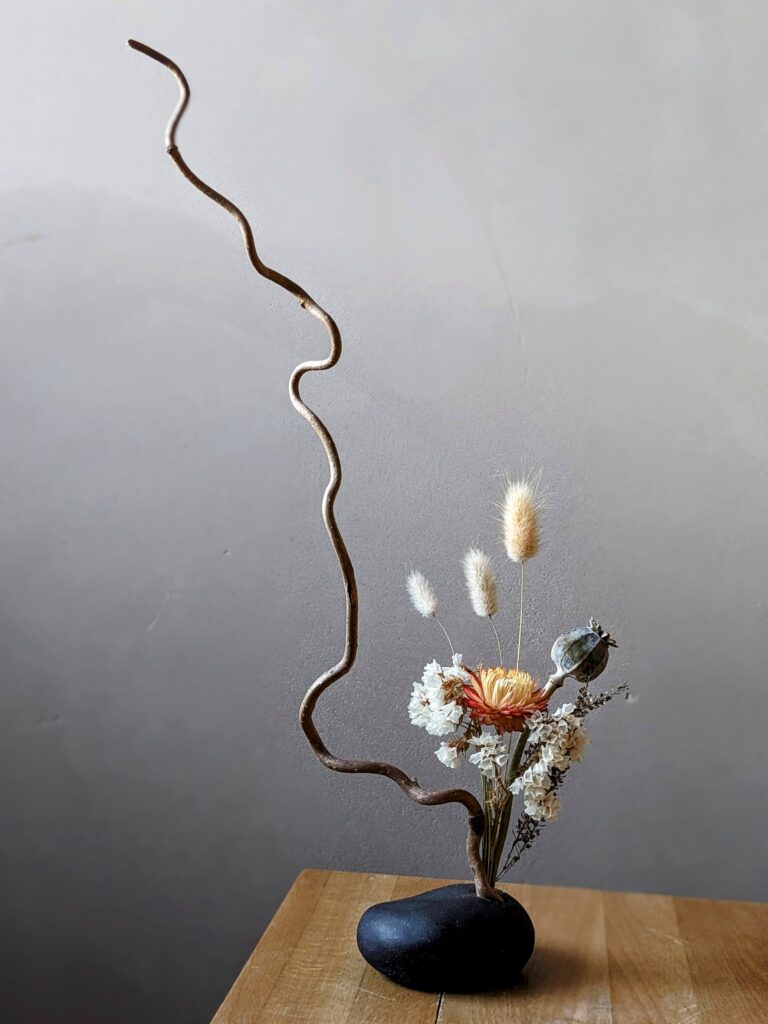
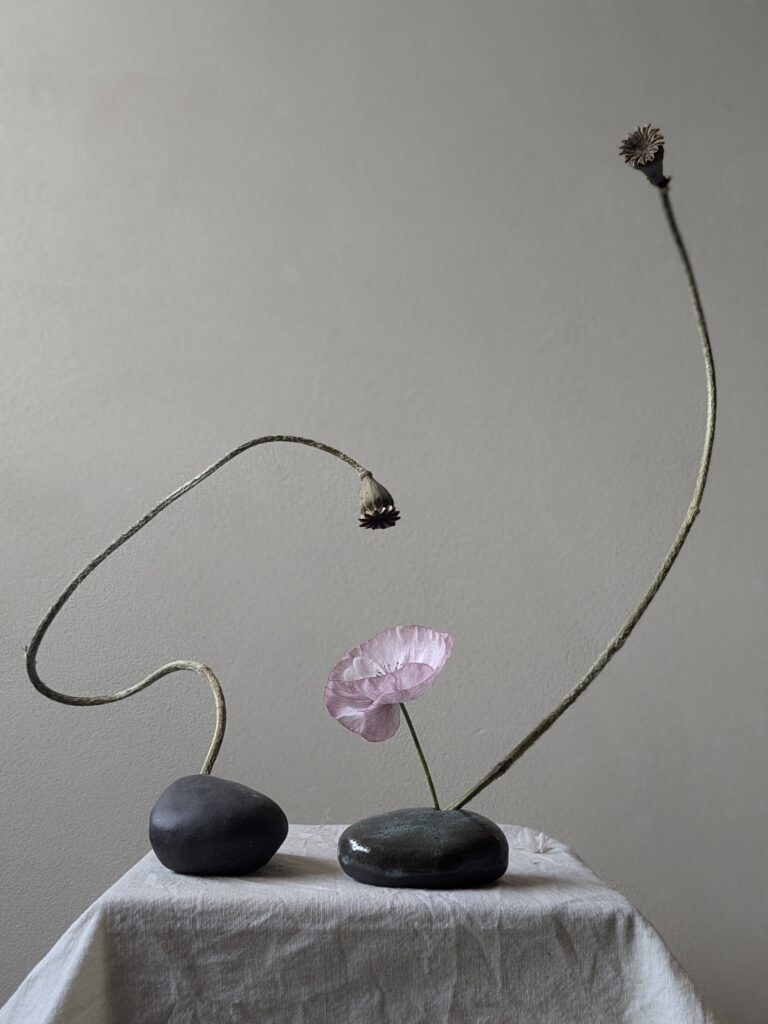
What inspired you to turn your passion for flowers into a business?
Designing with flowers is more a practice than a job for me at the moment—over the last year they’ve become my form of expression and mindfulness practice during a difficult phase of my life. I’m very reluctant to start any business that could take rob me of that.
However, I am inspired to get my work out there and share it because I think it has something to say about the depth and necessity of our human connection to nature. I’ve been pursuing a few avenues through studio open houses, art exhibitions and instagram. Gradually I hope to create enough of a local following that I can start taking commissions that will enhance rather than detract from my practice.
Are there any artists you look up to or inspire you the most?
Aside from Sofu Teshigahara the founder of the Sogetsu school of ikebana, I admire Emily Thompson, Kreeta Jarvenpaa, Ilse Beunen, Ichikomasumota, Mary Oliver and many others.
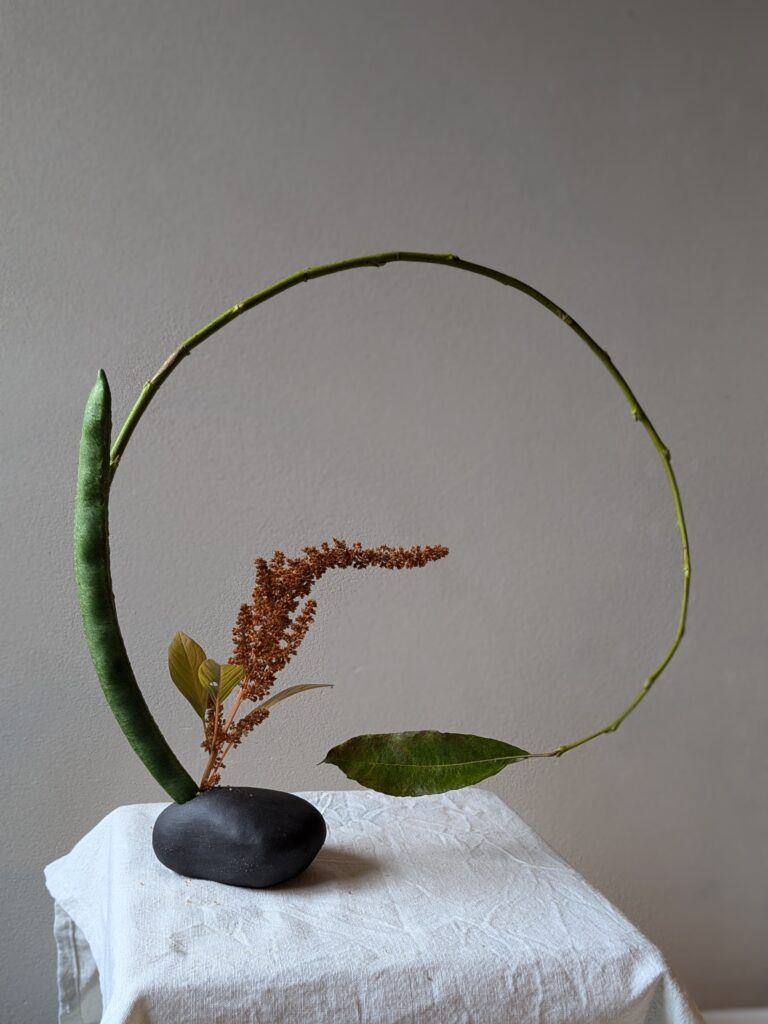
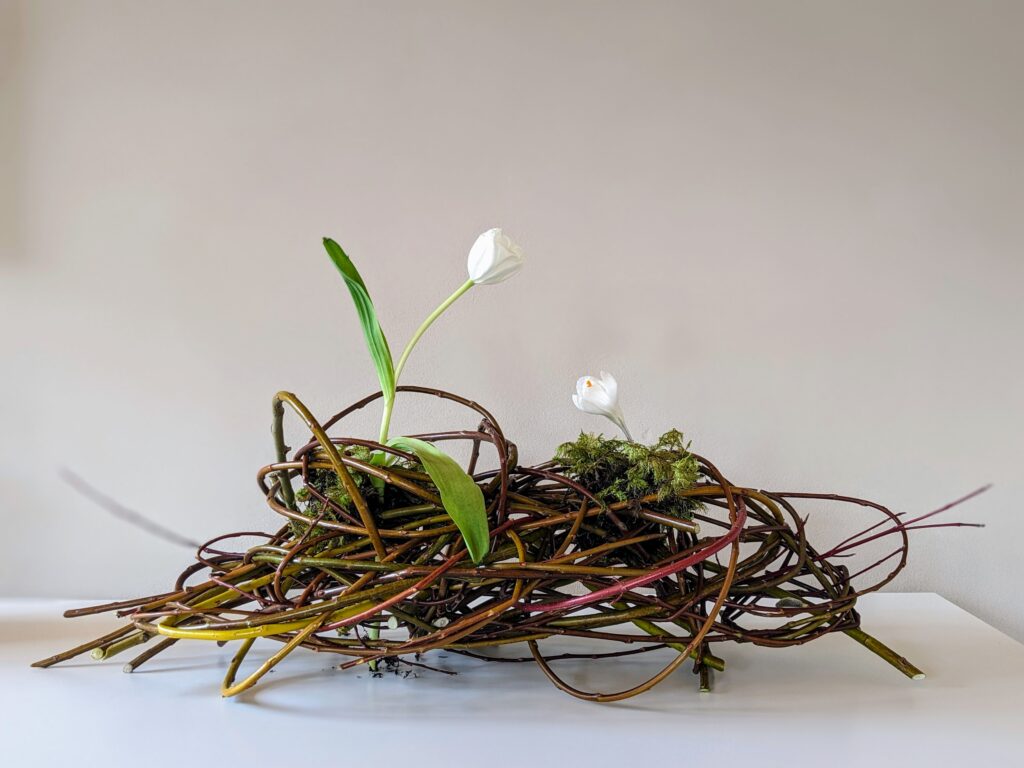
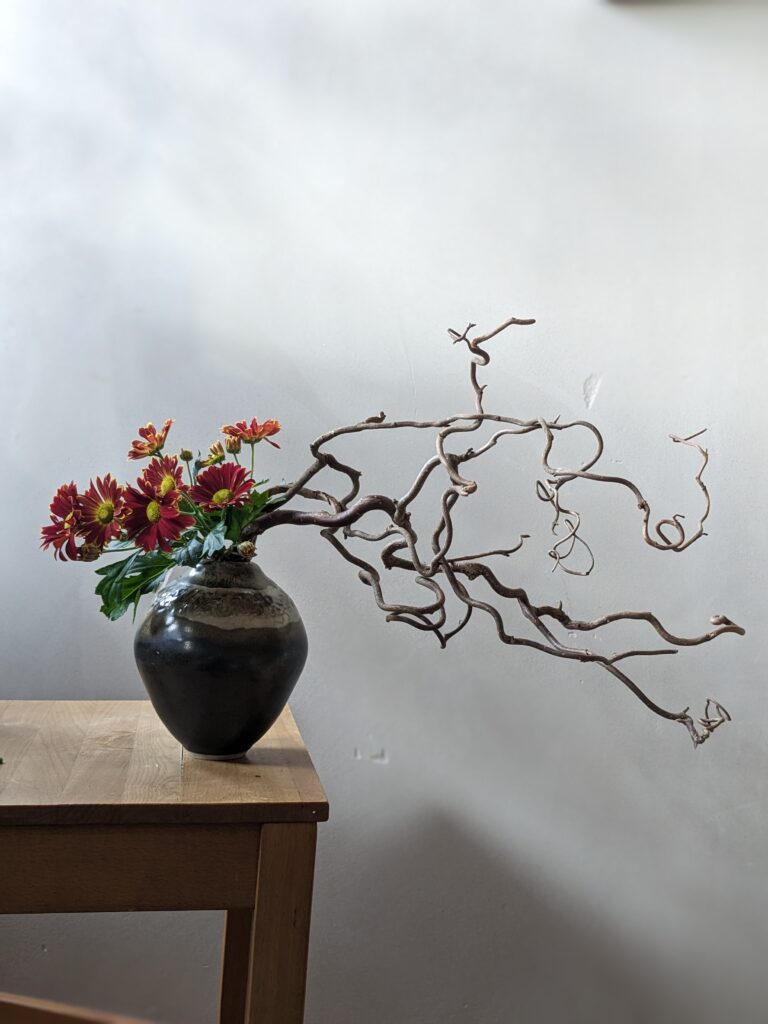
Where do you source your floral materials, vases and tools?
All my material is local, either grown in my garden or foraged in nearby woods. Because we have a short growing season I dry my flowers and use them sparingly in arrangements to get me through late fall and winter. I use branches, leaves, lichen and rocks I find during my daily dog walks. Searching for and finding material in its natural landscape is a key part of the process for me.
Finding the right vessels can be more challenging. My daughter started making very unique organic looking pottery vases for me which I love. I’ve also started collaborating with a local potter and use her vases to display my work in her studio open houses.
How would you describe your style of floral art?
Quirky, nature-inspired, organic, botanical creations.
Do you have a favourite material or season?
Right now my favourite season is fall–maybe because that’s the season we’re in. Honestly I think I love each season for different reasons. After the abundant blooming of summer it’s refreshing and almost a relief to pare things back a bit. I find summer can be overwhelming with its opulence. Fall feels a little more restrained but filled with this crazy energy that happens in transitions. Nothing beats foraging for fall treasures in the woods.
What advice would you give someone who is studying or wanting to study floral arrangement?
There are no rules and no one way to study. Read books, take online workshops, watch videos, practice daily but don’t force it. Immerse yourself in as many different styles as you can and trust your instincts
to evolve your own style that feels right. Be a lifelong student–realize that the studying, discovering new techniques and growing in new directions will never really end.
Do you have any good floristry secrets / tips to share?
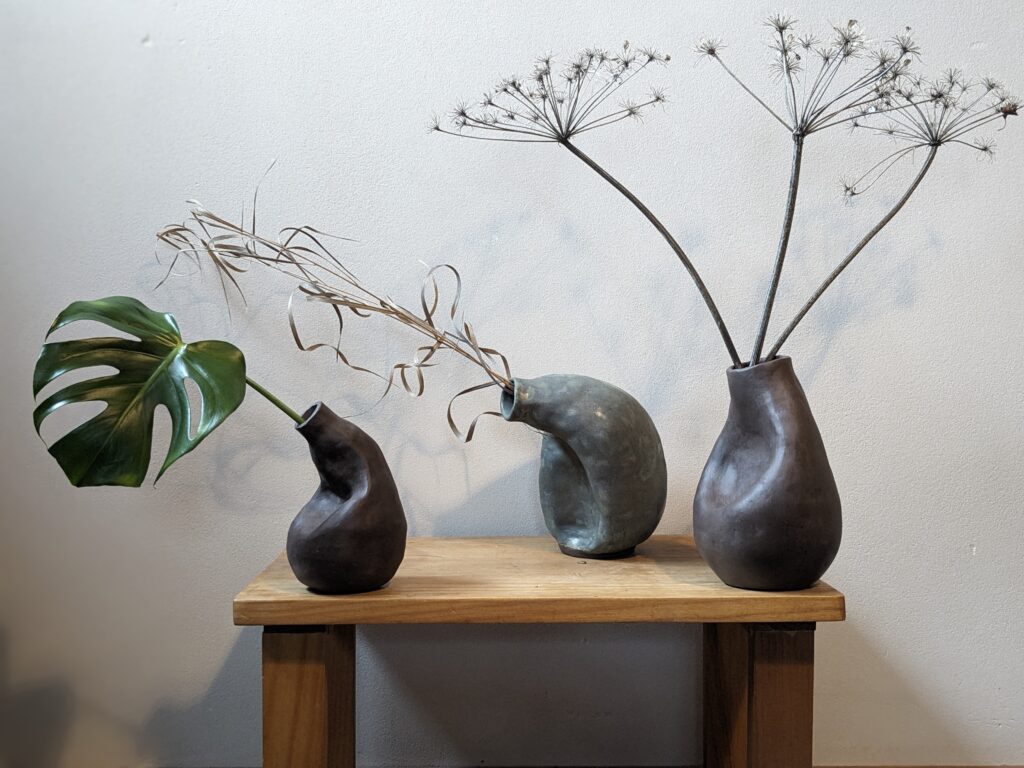
A phone with a decent camera and a plain backdrop with good lighting are essential. I find that taking a good portrait photo of my arrangement helps me to see it more objectively and make adjustments as needed. It’s like making revisions after you’ve scratched out a poem.
What’s been your best “I love my job” moment?
One of my best moments was when my daughter came home for Christmas with a box of funky, earthy pottery vases she made for me design with. We instinctively seem to understand each others’ aesthetic.
The vases are the perfect foundation for the minimalistic dried arrangements I love making in winter.
Collaborations like these are magical.
What are the biggest challenges you face working with flowers as a job?
The business side is definitely a challenge for me while living in a small remote town. Figuring out my market, pricing and niche are things I’m still trying to figure out. I don’t want running a business to overshadow my love for the work.
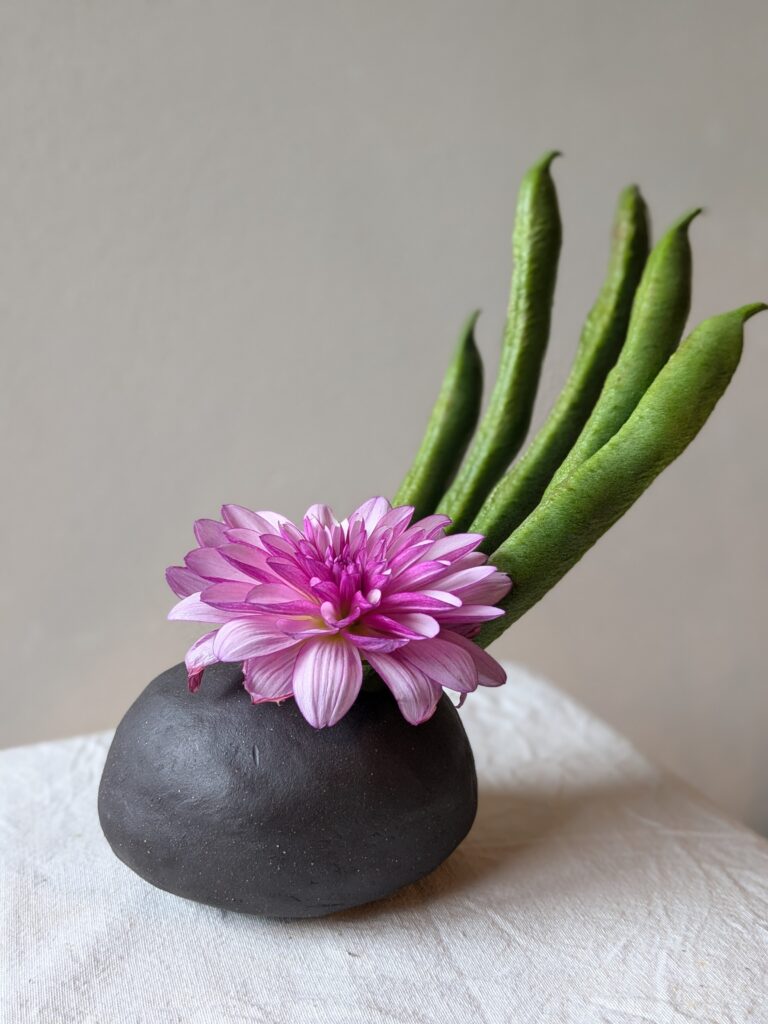
For flower lovers – where would you recommend they visit in your city in a 24 hour visit?
Smithers is a small town of 5000 at the base of a mountain with a small ski resort. A walk up the “ski out” is a favourite trail I can access right from my house in town. You walk along a mountain stream through dense forest that opens up to cow pasture and a gorgeous view of the river valley below. No matter what the season, I can always find interesting ferns, lichen, moss or branches to bring home to play with.
What is ahead for your flower future?
I’ll continue to study ikebana and look forward to travelling to Japan next year for further inspiration- hopefully with Julia and Sandy for an ikebana-themed tour with fellow flower enthusiasts! I’m working on some collaborations and hope to ‘soft-launch’ a business soon. Eventually, (once we sort out production logistics) I hope to partner with my daughter to sell her peculiar pottery paired with my peculiar arrangements.
Business Details
Instagram: @lindagrace.2
Studio: My home studio is open by appointment only in Smithers, British Columbia
The rest is in progress…
